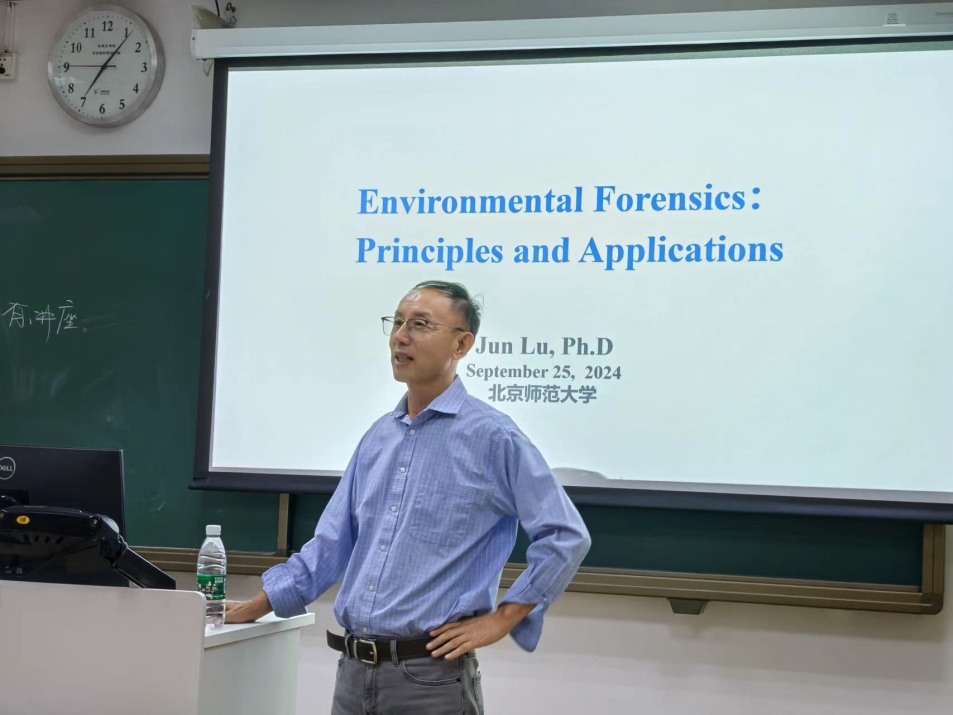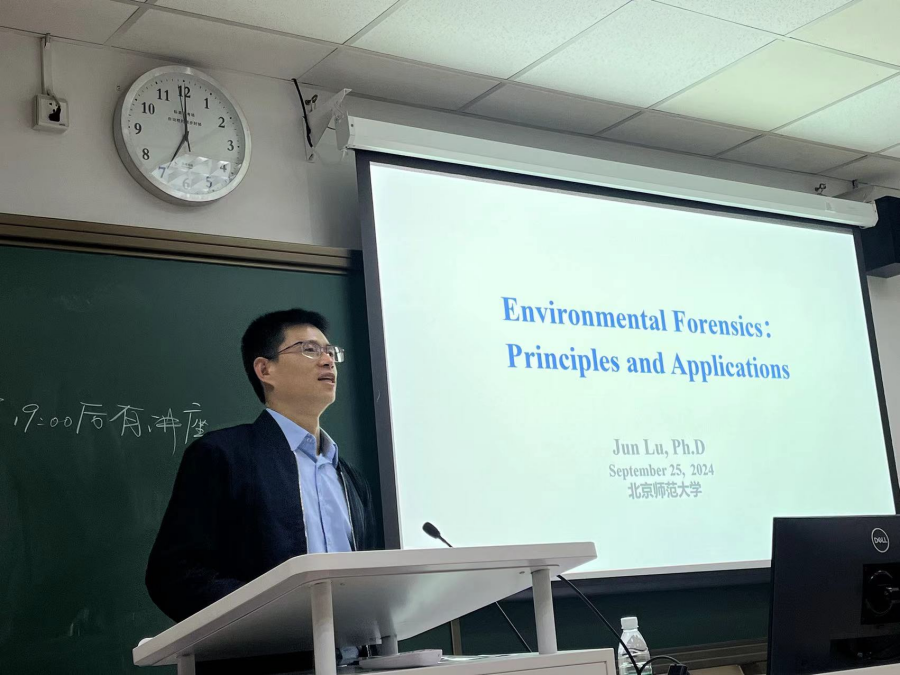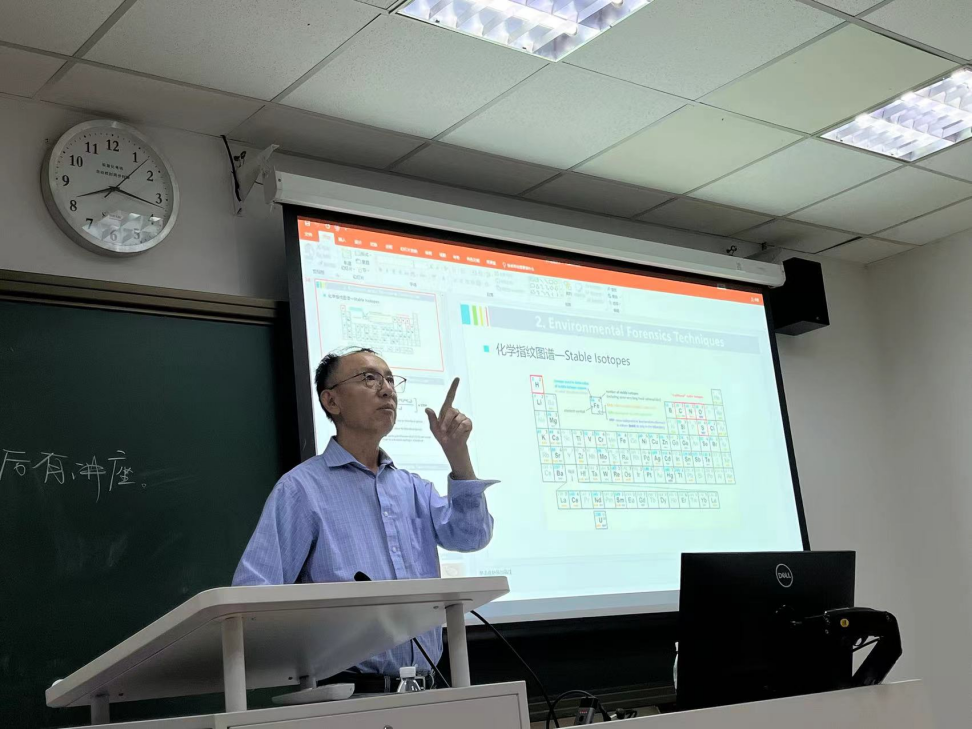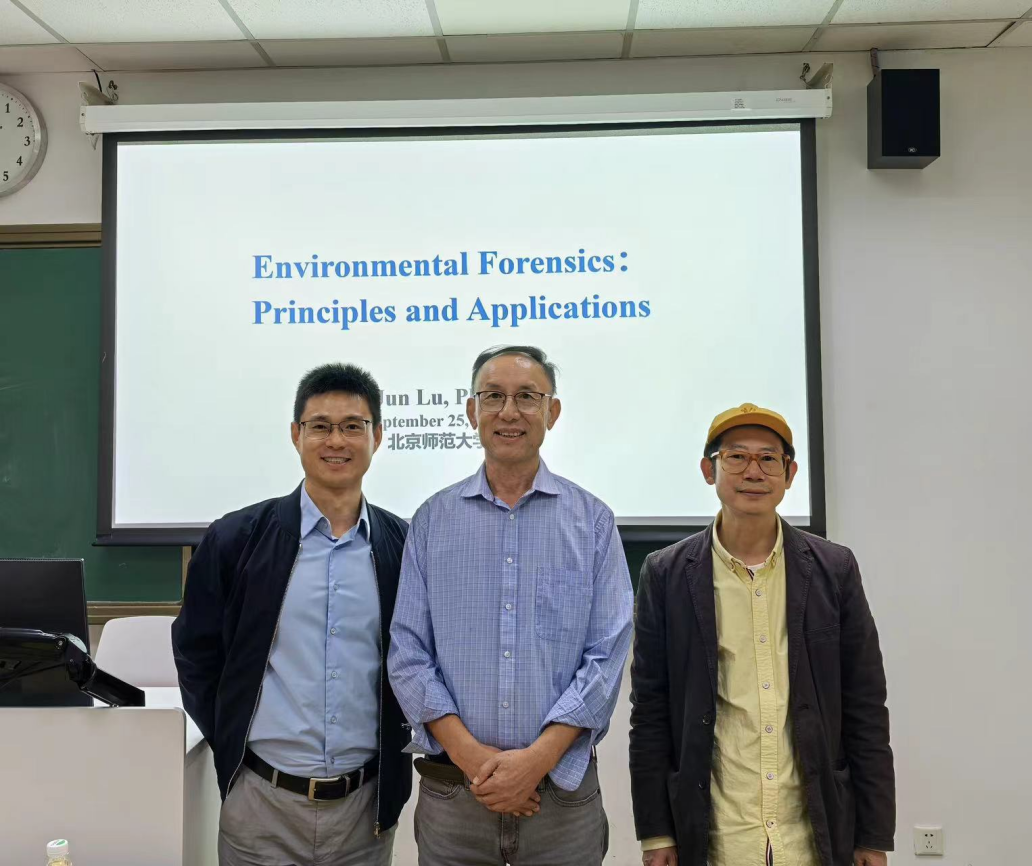
On the evening of September 25, 2024, the 66th session of BNU Legal Practice Lecture Series - " Environmental Forensics: Principles and Applications" was successfully held in Room 313 of the Second Teaching Building. The lecture was delivered by Dr. Lu Jun, a renowned Chinese-American specialist in environmental forensics, and moderated by Associate Professor Yan Houfu of the Law School of Beijing Normal University. The event drew an engaged audience of over 40 faculty members and students from the Law School, including Professor Yuan Dasong.

Before the lecture, Associate Professor Yan Houfu extended a warm welcome to Dr. Lu Jun and gave a brief introduction to Dr. Lu Jun’s study and work experience and the multidisciplinary field of environmental forensics.

Dr. Lu Jun commenced his presentation by delineating the core research areas of environmental forensics. Environmental forensics represents an interdisciplinary field of applied science, primarily concerned with the analysis of pollutant origins. In the pursuit of identifying the sources of soil and groundwater contamination, it encompasses a wide range of disciplines, including chemistry, soil science, geology, hydrology, and microbiology. Environmental forensics surpasses traditional methods of pollution source identification by offering a more holistic assessment of pollution sources, integrating the essential aspects of pollutant emissions and their progression through environmental media. Initially, environmental forensics was predominantly employed in environmental judicial appraisal and litigation. However, as the field has evolved, its utility has broadened to encompass pollution prevention, site investigation, and remediation efforts.
Following this, Dr. Lu Jun provided an overview of the advancement of environmental law in the United States, with a particular emphasis on the environmental legal liability concerns addressed in the Superfund Act (also known as the Comprehensive Environmental Response, Compensation, and Liability Act, or CERCLA). Utilizing the case study of a landfill, he vividly illustrated the critical nature of assigning environmental responsibilities, elucidating the concepts of strict liability, retroactive liability, and joint and several liability.

Dr. Lu Jun delved into the practical application of environmental forensics within environmental legal cases, elucidating three pivotal traceability techniques: chemical fingerprinting, stable isotopes, and dendrochronology. Initially, he demystified the complex process of the chemical fingerprint method by breaking down the fractionation principle of gas chromatography. In accessible terms, he described how this method analyzes the degradation of various pollutant components in soil, in conjunction with geological, hydrological, and biological factors, providing a clear roadmap for collaboration between legal professionals and expert assistants. Transitioning to the realm of stable isotopes, Dr. Lu Jun explained the atomic composition of carbon-13, highlighting the analytical approach for identifying the selective uptake enrichment by microorganisms, a key technique for tracing pollutant origins. He then segued into the methodology of dendrochronology, detailing the steps involved in extracting core samples from trees, analyzing the width of annual rings and the pollutant distribution across different samples, to pinpoint the potential sources of environmental contamination. In his final segment, Dr. Lu Jun introduced the pattern recognition method, using polycyclic aromatic hydrocarbons (PAHs) as a case study. He explained the principle of counting the number of branched carbon atoms in PAH homologues to distinguish between petrogenic (originating from petroleum) and pyrogenic (resulting from combustion) sources, based on whether the data presents a normal distribution or a Poisson distribution pattern.

Associate Professor Yan Houfu offered his insightful reflections on the lecture. He began by extending his heartfelt appreciation to Dr. Lu Jun for the latter's exemplary presentation. Professor Yan then encapsulated the application of environmental science within environmental law, elucidating the concept of retroactive liability as enshrined in the Superfund Act. He conducted a comparative examination of the legal practices associated with the Superfund Act alongside the notable toxic land cases in Changzhou and Suzhou in China. Professor Yan underscored the importance of upholding scientific principles in the realm of environmental law, emphasizing that all stakeholders must adhere to legal statutes while concurrently respecting scientific laws, allowing the light of "Science" to shine upon and guide legal practice.

The lecture provided students with not only a profound grasp of the principles and practical applications of environmental legal liability and environmental forensics as they are understood in the United States but also a nuanced insight into the integration of environmental science principles within environmental law. As the session concluded, it was met with resounding applause from the faculty and students in attendance.
